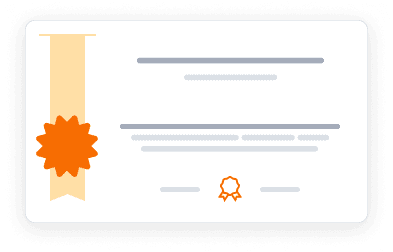This course is part of multiple programs. Learn more.
This course cannot be purchased separately - to access the complete learning experience, graded assignments, and earn certificates, you'll need to enroll in the full Algorithms Specialization program. You can audit this specific course for free to explore the content, which includes access to course materials and lectures. This allows you to learn at your own pace without any financial commitment.
4.8
(1,973 ratings)
88,116 already enrolled
Instructors:
English
پښتو, বাংলা, اردو, 3 more
What you'll learn
Master graph search algorithms including BFS and DFS
Implement Dijkstra's shortest-path algorithm
Work with advanced data structures like heaps and balanced trees
Understand hash tables and their applications
Apply bloom filters for efficient data management
Skills you'll gain
This course includes:
9.2 Hours PreRecorded video
9 assignments
Access on Mobile, Tablet, Desktop
FullTime access
Shareable certificate
Closed caption
Get a Completion Certificate
Share your certificate with prospective employers and your professional network on LinkedIn.
Created by
Provided by

Top companies offer this course to their employees
Top companies provide this course to enhance their employees' skills, ensuring they excel in handling complex projects and drive organizational success.





There are 4 modules in this course
This comprehensive course covers advanced algorithms and data structures, focusing on graph search algorithms, shortest paths, and fundamental data structures. Students learn essential concepts including breadth-first and depth-first search, Dijkstra's algorithm, heaps, balanced binary search trees, hash tables, and bloom filters. The curriculum emphasizes both theoretical understanding and practical applications, preparing learners for complex problem-solving in software development and computer science.
Breadth-first and depth-first search
Module 1 · 3 Hours to complete
Dijkstra's shortest-path algorithm
Module 2 · 2 Hours to complete
Heaps and balanced binary search trees
Module 3 · 3 Hours to complete
Hashing and bloom filters
Module 4 · 4 Hours to complete
Fee Structure
Individual course purchase is not available - to enroll in this course with a certificate, you need to purchase the complete Professional Certificate Course. For enrollment and detailed fee structure, visit the following: Algorithms Specialization, Meta Front-End Developer Professional Certificate
Instructor
A Pioneering Computer Scientist and Game Theory Expert
Tim Roughgarden has established himself as a leading figure in theoretical computer science, particularly at the intersection of algorithms and economics. Born July 20, 1975, he earned his Ph.D. from Cornell University in 2002 under Éva Tardos's supervision, followed by a postdoc at UC Berkeley. He served as a professor in Stanford University's Computer Science department from 2004 to 2018 before joining Columbia University. His research focuses on algorithm design, game theory, and their applications to networks, auctions, and blockchains. His contributions have earned him numerous prestigious honors, including the Grace Murray Hopper Award, the Presidential Early Career Award for Scientists and Engineers, the Gödel Prize, and a Guggenheim Fellowship. As an educator, he has developed widely-used online courses in algorithms through Coursera and authored several influential textbooks including "Algorithms Illuminated" and "Twenty Lectures on Algorithmic Game Theory." Currently serving as a Professor at Columbia University and Head of Research at a16z crypto, he continues to advance the field through his work on the boundary of computer science and economics.
Testimonials
Testimonials and success stories are a testament to the quality of this program and its impact on your career and learning journey. Be the first to help others make an informed decision by sharing your review of the course.
Frequently asked questions
Below are some of the most commonly asked questions about this course. We aim to provide clear and concise answers to help you better understand the course content, structure, and any other relevant information. If you have any additional questions or if your question is not listed here, please don't hesitate to reach out to our support team for further assistance.



